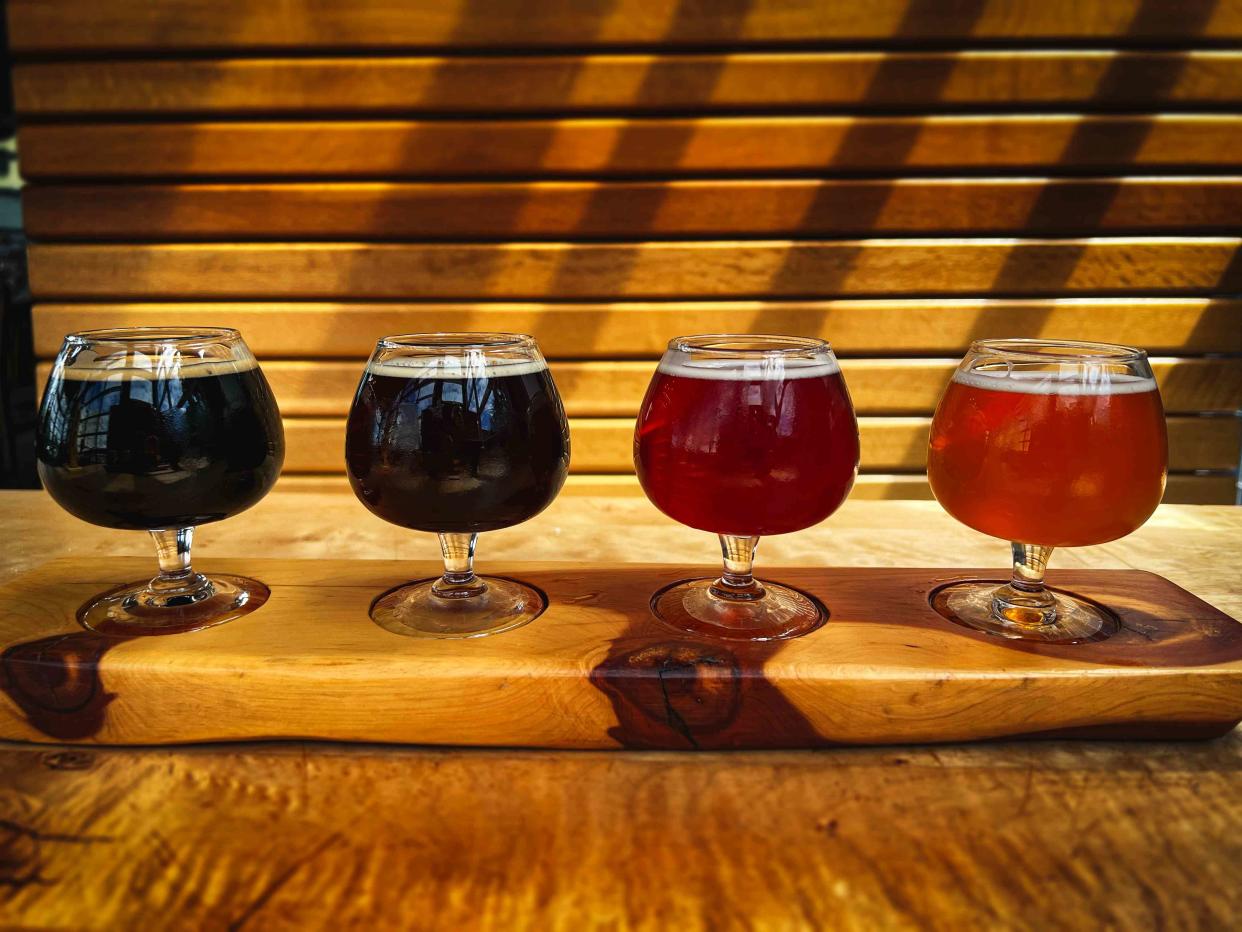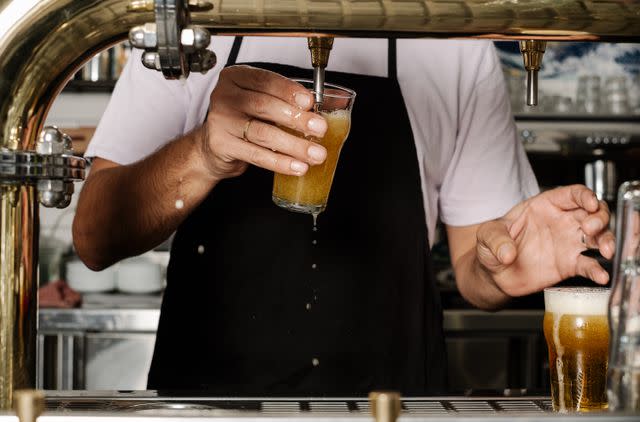From IPAs to ESBs, Here's the Ultimate Guide to Beer Abbreviations
We're here to help you decipher your next beer label or taproom menu board.

Vitaly Sergachiov / Getty Images
There are a lot of abbreviations used in the world of beer. These shorthand brewing terms can often feel like code to the uninitiated.
The most common, and popular is IPA, for India pale ale. This hoppy style of beer features vibrant aromas and flavors from citrus and tropical fruits to wood, pine, and marijuana. Other beer styles can also be abbreviated, like APA for American pale ale, RIS for Russian Imperial Stout, and ESB for Extra Special Bitter.
Related: Here’s the Real Reason Beer Comes in Aluminum Cans
There are other bits of alphabet soup that exist around beer. Some breweries will put a BA before beer names to note that it has been barrel-aged. Others might use MF for mixed fermentation.
Here is a quick and handy guide to help you decipher your next beer label or taproom menu board.

IMAGINESTOCK / Getty Images
ABV
Alcohol by Volume. This is the standard measure of alcohol that is present in a serving of beer (or other alcoholic beverage.) The higher the percentage, the more alcohol is contained within. Brewers can determine a beer’s alcohol content by using a device known as an Alcolyzer. This system can determine the total alcohol content by analyzing the ingredients used and the amount of fermentable sugars it brings to the recipe.
BBL
This is an acronym that refers to beer barrels, which is how beer production (and the amount breweries owe in taxes) is tracked in the United States. A standard barrel is 31 gallons.
DDH
Double Dry Hopping. This is a technique that brewers use to get more vibrant hop flavors and aromas into beers. With traditional brewing, hops are added to the boil during the beer-making process, extracting alpha acids and giving the beer bitterness.
Dry hopping is when brewers add hops, either pelletized or whole cone after the beer has cooled and is fermenting in the tank. Typically brewers will brew normally and then transfer a beer to fermentation tanks where it spends a few days. Then the brewers will add hops to the fermentation tank and allow it to steep, extracting those lush hop flavors into the beer but without added bitterness.
IBU
International Bitterness Units. This is a measurement unit, used by brewers, to determine the amount of hop-derived alpha acids in a beer. IBU can range from 1 to 110, the higher the number, the more perceivable the alpha acids. Styles like a light lager or English mild will have lower numbers, and IPAs will be higher. Some brewers will put IBU on packaging to highlight a beer's hoppiness.
OG and FG
Original Gravity and Final Gravity. This is a helpful measurement in brewing. Original gravity refers to the amount of dissolved sugar in beer that can be converted into alcohol during fermentation. Final gravity is how much unfermentable sugar remains in a beer following fermentation.
Various styles of beer have their own OG and FG targets that help brewers determine If their recipe worked as planned.
SRM
Standard Reference Method helps identify a beer’s color.
The American Society of Brewing Chemists created the SRM in the 1950s as a way of classifying a beer’s final color based on the malts used in the brewing process. The range is from one (pale yellow) to more than 40 (black). This is a useful tool especially in beer judging as different styles have been given an SRM number range, and beers submitted for competitions should meet those parameters.
Having a bit of knowledge and understanding of the shorthand can help the overall beer-drinking experience. And should you encounter an unfamiliar term or abbreviation in a taproom, don’t be afraid to ask for an explainer. Brewers, in general, are a friendly lot and love to share information with curious drinkers.
For more Food & Wine news, make sure to sign up for our newsletter!
Read the original article on Food & Wine.






